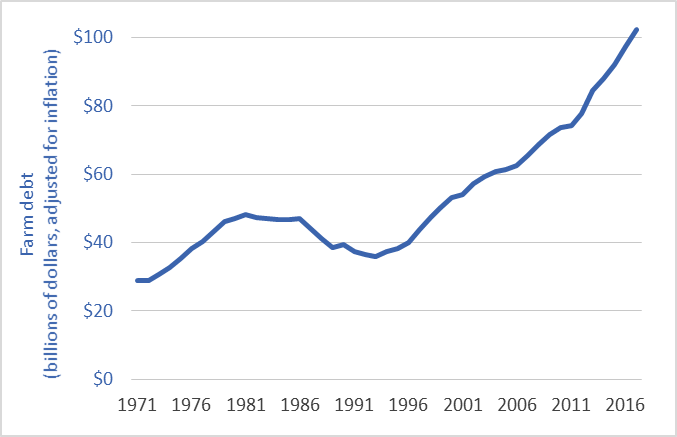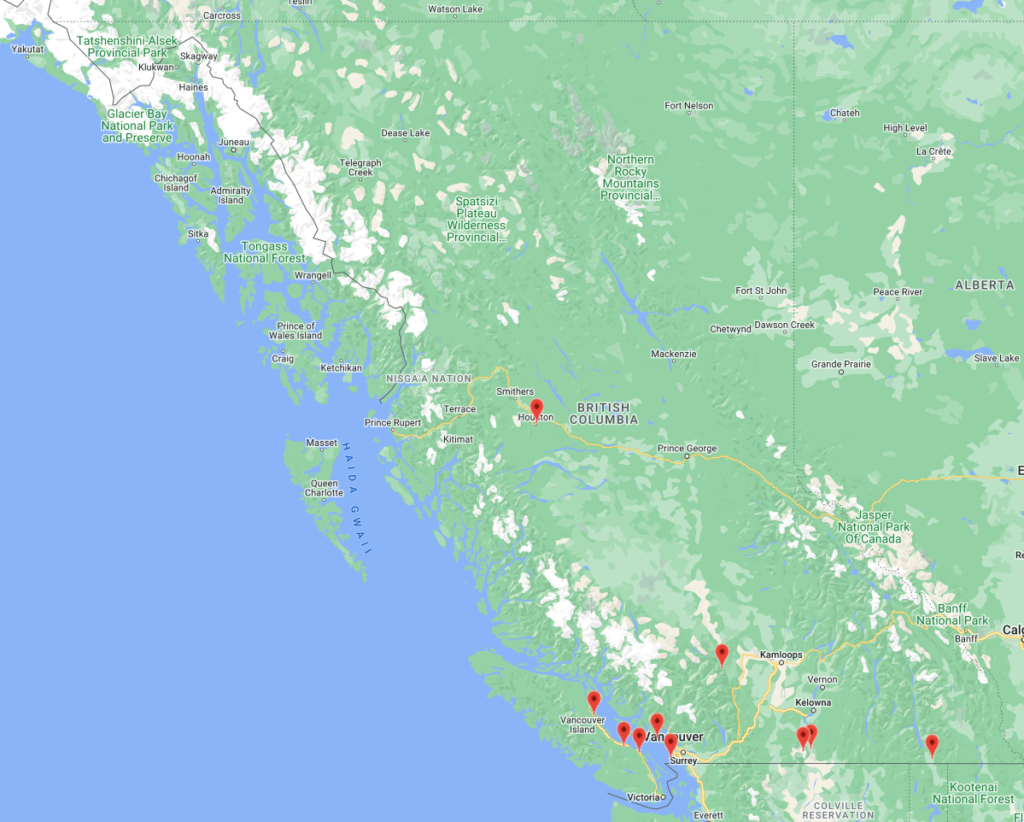An Overview of Regenerative Farming in British Columbia
Regenerative agriculture (RA), broadly defined, is the practice of any agricultural activity, such as farming or ranching, that improves the environment at the same time as producing food or other farming products.
There are regenerative farms all over the world, although each regenerative farm may use slightly different regenerative practices. This article will present benefits of regenerative agriculture in British Columbia (BC) and provide several examples of regenerative farms and initiatives in BC.
Background information: What Is Regenerative Agriculture?
Table of Contents
Why Is Regenerative Agriculture Needed in BC?
Regenerative Agriculture in BC
Why Is Regenerative Agriculture Needed in BC?
Agriculture in British Columbia produces over 200 different types of products, produced at over 17,528 farms in the province. In 2019 alone, the province exported around $3.2 billion CAD of agricultural products, and agriculture created around 35,100 jobs in BC. Because agriculture is such a large part of the province’s economy, it’s important that it maintains high levels of production; regenerative agriculture helps farmers maintain high crop yields.
One of British Comlumbia’s agriculture sector’s main weaknesses is the limited amount of arable land, according to the 2020 Study of the British Columbia Agriculture Sector commissioned by the BC Agriculture Council. The study also cites the impacts of climate change and natural disasters as one of the major threats. On the other hand, the country does experience conditions that are good for growing an extremely wide variety of high quality crops.
Agricultural challenges in BC, including limited amounts of arable land, drought, climate change, and increased debt, are incentivizing farmers to switch from traditional to regenerative agricultural methods.
Limited arable land: According to the 2020 Study of the British Columbia Agriculture Sector, only about 15% of land in BC is able to be used for agriculture, with only 5% suitable for crop growing. Land in BC is also in high demand for other uses such as housing, and thus there is debate over how much land should be reserved for farming. Regenerative agriculture and new green agriculture technologies can help increase crop yields through healthy soils, and thus can aid in producing more food on smaller amounts of land. RA can also ensure crops that are produced are nutrient rich.

Source: BC Drought Map, Terrace Standard
Drought: In 2021, much of southern and central BC were impacted by a drought, shown in darker colors on the map to the right. Low rainfall and extreme heat waves led to a “Level 4” drought, the second highest possible level in the government’s classification system. Farms and other agricultural activities were impacted by drought and subsequent limits on water usage. They were also encouraged to improve the efficiency of their water use systems. Regenerative agriculture provides helpful tools for conserving water without sacrificing crop yields. For example, planting cover crops helps increase soil fertility, and thus crop yields, without taking soil moisture away from cash crops.
Climate change: Climate change’s impacts such as storms and increased temperatures are already affecting farmers in BC and the rest of Canada. Agriculture itself is a large contributor to climate change; around 12% of Canada’s greenhouse gas emissions come from agriculture. Many farms are turning to regenerative agriculture in BC in an effort to reduce greenhouse gas emissions through new farming practices. Regenerative agriculture can not only help farmers adapt to climate change’s extreme conditions, but it can even help mitigate climate change by increasing carbon sequestration in soil.
Read more: Low Carbon Agriculture

Canadian farm debt: Canada’s farmers, including many farmers in BC, are facing a debt crisis. In fact, the current farm debt of around $106 billion CAD has doubled since the year 2000, and is largely caused by the large amounts of money many farmers must spend on fertilizers, pesticides, farming machinery, and other tools supplied by large corporations. Most farmers only make about a 5% profit due to these expenses. In response, many farmers are turning to regenerative agriculture, as its techniques can help lower the amount that farmers must pay for costly tools like chemical pesticides and fertilizers (referred to as “reducing the input”), and thus help farmers make a larger profit in the long run. For example, one study showed that regenerative farmers made 78% more profit.
Regenerative Agriculture in BC
Regenerative agriculture is happening in BC in a number of ways. These include regenerative farms, community organizing, research, new agri-technologies, and legislation to advance regenerative agriculture initiatives.
Farms and Ranches
Out of the thousands of farms in British Columbia, many of them practice at least one regenerative practice. Here are a few examples of regenerative farms in BC.
Cropthorne Farm
Cropthorne Farm is located on Westham Island, BC. The family farm sells their regeneratively-grown produce in Vancouver, as well as through Community Support Agriculture (CSA) programs, in which customers buy a farm share before the season, providing income to the farmer, and then receives a box of produce throughout the year. Cropthorne Farm is Certified Organic and also uses cover cropping, in which other crops are grown amongst “cash” crops, which helps to increase biodiversity and soil health and acts as natural pest control. The farm also composts and rotates their crops, which increase food nutrients and crop yields.
Covert Farms
Covert Farms Family Estate is located in Oliver, BC. They produce wine, produce, eggs, and poultry through regenerative farming. Their regenerative practices include:
- Reduced tillage (and thus reduced disturbance of soil)
- Soil cover like mulch and cover crops
- Increased biodiversity of crops
- Habitat conservation
- Agroforestry
- Managed grazing
- Rainwater harvesting
- Natural fertilizers and pest control
These practices all help to increase soil health, and thus decrease pests and the chance of crop disease. The farm is Certified Organic.
Learn more about how these practices benefit farmers: Regenerative Agriculture Infographic
Other Farms
There are several other regenerative farms in BC. You can find them using Regeneration International’s regenerative farm map, although the map does not show every regenerative farm in BC.

Source: Regenerative Farm Map, Regeneration International
Community Organizing
Farmers for Climate Solutions
The Farmers for Climate Solutions describe themselves as “a national coalition of farmer-led and farmer-supporting organizations who believe that agriculture must be part of the solution to climate change.” Launched in February 2020, this coalition of Canadian farmers of all types works to promote agricultural practices that reduce greenhouse gas emissions without compromising profits for farmers. The group aims to push the Canadian government to create policies that support the implementation of sustainable and regenerative agricultural solutions in BC and across Canada.
Regeneration Canada
Regeneration Canada is a nonprofit organization that works to create a coalition of farmers, scientists, businesses and governments to take action to create healthy soils across Canada. While it was originally started in Montreal, they now have members across the country, including in BC. Regeneration Canada hosts workshops on soil regeneration practices and provides education and networking opportunities for a variety of stakeholders. They also host the Living Soils Symposium, an event focused on sharing knowledge about regenerative agriculture in the country.
Research
Many scientists are studying the impacts of regenerative agriculture on soil health and farming success in British Columbia. For example, a 2019 study focused on Fraser Valley, an agriculture area in south coastal BC that produces large amounts of agricultural products. The study evaluated the soil health of corn crops that experienced tillage (a mechanical turning of land for growing) for 21 years and crops that were no-till for the same amount of time. They found that no-till farming led to increased water availability and increased carbon, as well as other essential plant nutrients such as potassium and magnesium. The other soil health indicators measured in the study remained similar between no-till and tillage.

Source: Mimigu at English Wikipedia
New Technologies
Terramerra, a tech company based in Vancouver, is producing a soil-sensing technology in collaboration with the BC Innovative Clean Energy Fund to provide better measurements of how much carbon is in the soil, a key measure of soil health. With this technology, Terramera aims to make regenerative farming easier by making it easier for farmers to measure soil carbon, and making farming decisions based on those measurements. This will lead to healthier soils and increased carbon sequestration, which helps mitigate climate change and meet BC’s climate goals.
Government Programs
The government of British Columbia offers free farm assessments through the Environmental Farm Plan Program (EFP), which helps farmers learn to reduce their impact on the environment. Farmers who participate often increase profits and crop yields. The program also offers farmers funding to implement regenerative agriculture practices that, according to their website, help reach goals such as:
- Promoting on-farm biodiversity
- Reducing greenhouse gas emissions
- Increasing water and nutrient use efficiency
- Protection of riparian areas
- Building healthy soil
The EFP also offers a full reference guide, sometimes referred to as a workbook, for farmers, which includes information on soils, pest management, nutrient application, biodiversity, and crops and livestock, among many other regenerative agriculture topics.The Government of B.C. also implemented a Regenerative Agriculture and Agritech Network (RAAN) in 2021 that focuses on helping farmers to adopt regenerative agricultural practices. The program encourages traditional regenerative agriculture practices on BC farms, such as using natural fertilizers, and also the use of new technologies, such as Terramera’s soil health technology discussed above.